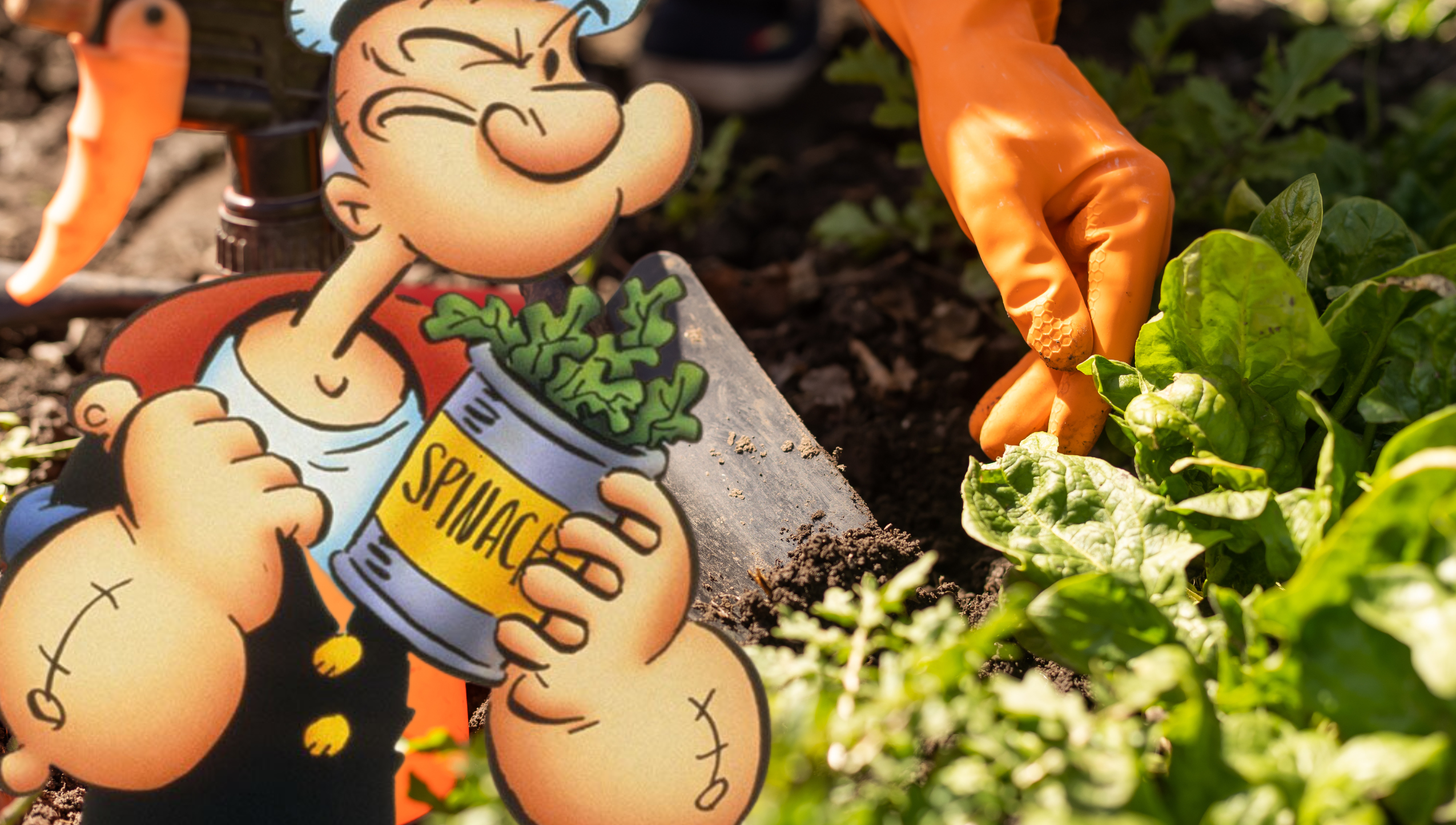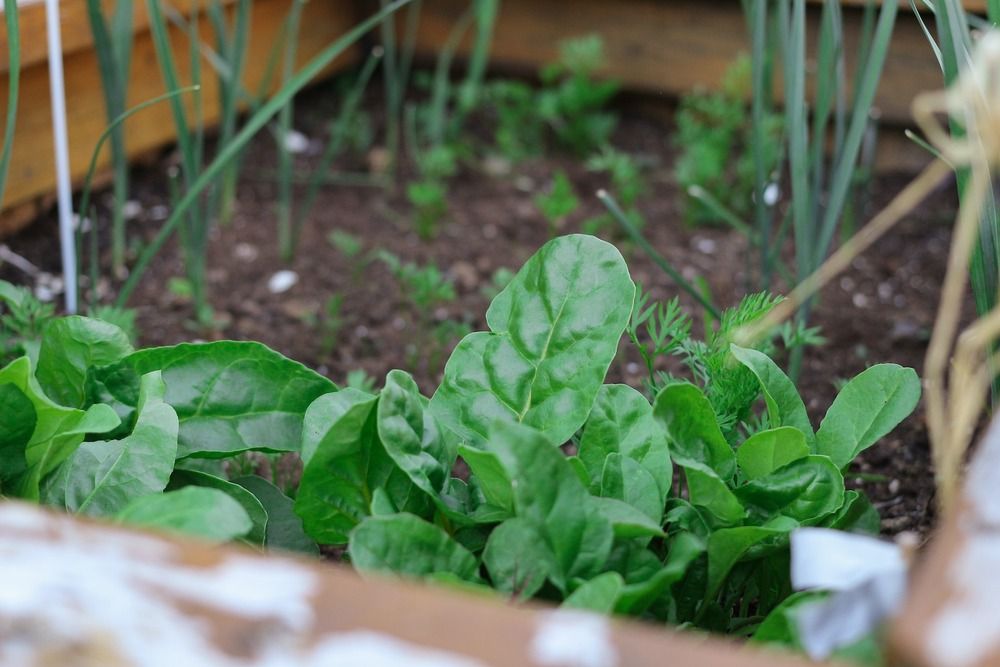Spinach, with its bright green leaves and rich nutrients, is perfect for home gardening. Spinach offers versatility that few other greens can rival — whether blending it into a fresh smoothie, wilting it into a savory dish, or simply enjoying it raw.
But to make the most of your spinach harvest, understanding the right time and method for picking these leafy greens is crucial. Dive into essential tips to make sure your harvest is both bountiful and delicious.
Timing is Crucial
Knowing when to pick your spinach
- First Harvest: Begin harvesting young spinach leaves approximately six to eight weeks after planting. These younger leaves often have a milder, more delicate flavor compared to their mature counterparts.
- Before Flowering: Spinach leaves tend to acquire a bitter taste when the plant starts flowering. This usually happens when the days become longer and warmer in summer. Therefore, it's essential to complete your harvest before this stage.
When harvesting, look for vibrant green, crisp leaves that are about 3 inches long. Keep in mind that younger leaves will have a sweeter taste while more mature leaves may offer a robust flavor.
How to Harvest Spinach: A Step-by-Step Guide
Steps to ensure to fresh and flavorful spinach harvesting
- Sharp knife or garden scissors — make sure your tools are sanitized
- Collection basket or container
- Plastic bag (for storage if necessary)
Determine Harvest Time:
The moment of harvesting spinach largely depends on the maturity you desire for your leaves.
- Baby Spinach: These are the tender, young leaves that can be ready for harvest remarkably quickly. Within just a month after planting, you might notice these leaves showing their delicate texture and milder flavor. They're perfect for salads or for adding a subtle, fresh note to your dishes.
- Mature Spinach: After about two months, the leaves have grown larger and are more robust in flavor. These mature leaves are ideal for cooking, as they can withstand heat without wilting immediately and have a stronger spinach taste which can enhance your dish's overall flavor profile.
It's essential to pay close attention to the growth timeline and physical appearance of the spinach plant. As mentioned, if you see the leaves starting to look ready, trust your instincts. The visual cues and time markers can be a reliable indicator that it's time to begin your harvest.
Choose Your Harvesting Method:
- Cut and Come Again: This method involves picking only a few outer leaves from each plant, leaving the inner leaves to grow and be picked in a few weeks. This approach ensures that the plant continues to produce leaves over a long period.
- Whole Crop Harvest: Wait until the spinach plants are well established (after about two months) and then harvest the entire crop of leaves at once by cutting just above the base. If the plants have a healthy root system, they should regenerate for at least one more harvest.
The "cut and come again" method is suitable for many leafy crops, including lettuces, salad leaves, chard, mizuna, kale, and of course, spinach.
Harvesting Process:
- For the "cut and come again" method, take a few leaves from each plant along the row. You can make repeat pickings every few weeks.
- For whole crop harvesting, ensure the plants are matured, then cut all the leaves at once just above the base.
- Always harvest outer leaves first, so inner leaves can develop further.
Spinach is best consumed fresh for maximum flavor and nutrients. However, it can be stored by placing the leaves in a plastic bag and refrigerate for a few days. Spinach can also be frozen and used in cooking later on.
Beware of Bolting
Understanding spinach's rapid stalk growth
When it's said a spinach plant is "bolting," this refers to its rapid shift from growing leaves to producing a tall stalk and, subsequently, flowers or seeds. This transition, although natural, affects the taste and texture of the spinach. The leaves become narrower and the overall taste of the spinach can turn markedly bitter.
Causes of Bolting
The primary triggers for bolting in spinach are increasing daylight and warmer temperatures. Typically, when the temperatures are warmer (75 degrees Fahrenheit and above) and there is around 14 hours or more of direct sunlight, spinach plants sense this change and initiate the bolting process. Rising seasonal temperatures can also accelerate this process. It's the plant's natural way of ensuring reproduction, but it's not ideal for those of us seeking tender, flavorful leaves.
Mitigating Bolting
While it's challenging to completely prevent bolting, gardeners can take steps to prolong the leafy stage and delay the onset of bolting:
- Choose bolt-resistant varieties: Some spinach varieties have been bred to resist bolting, giving you a longer harvesting window. 'Escalade' and 'Space' are some good slow-bolt varieties.
- Provide shade: Using shade cloth or other shading methods can help keep the spinach cooler, reducing the stress that prompts bolting.
- Maintain consistent moisture: A well-watered spinach plant is less likely to bolt prematurely. Ensure the soil remains moist, especially during warmer periods.
- Harvest early and regularly: If you notice the early signs of bolting, it's a good idea to harvest the plant. Even if bolting has begun, the leaves can still be edible, though they might be on the bitter side.
Spinach, with its nutrient-rich profile and versatility in dishes, stands as a garden favorite for many. Knowing when and how to harvest ensures the best results from the plants, retaining the tender taste and maximum nutrients. From understanding the "cut and come again" method to being vigilant of bolting, each step plays a crucial role in the spinach gardening journey.




